AI Agentic Workflows 101: A Guide for Modern Business
Summarize this article with:
✨ AI Generated Summary
AI agentic workflows automate complex business tasks by breaking them into manageable subtasks and enabling autonomous decision-making through various types of AI agents, such as reflex, goal-based, and learning agents. Key benefits include increased efficiency, 24/7 operation, reduced human error, and cost savings, with applications spanning customer service, supply chain, fraud detection, and marketing. Implementation challenges involve infrastructure, data quality, and legacy integration, while tools like GitHub Copilot, LangChain, and Microsoft AutoGen support development and deployment.
Modern businesses are harnessing the power of artificial intelligence in various ways to automate and optimize their operational efficiency. AI agentic workflows can play an important role in this as they simplify complex business processes. They break down any work assigned to them into smaller parts and function autonomously to complete tasks in a highly efficient manner. This trend has been validated by recent industry data showing widespread adoption of AI across business functions, with analytics professionals increasingly utilizing AI to assist in code development activities.
This article provides a comprehensive overview of AI agentic workflows, including their types and capabilities. It also explains the benefits, challenges, and frameworks that can help you deploy these workflows in your enterprise.
What Is AI Agentic Workflow?
Artificial Intelligence (AI) agentic workflow is a sequential and repetitive process of performing complex tasks by giving instructions to large language models (LLMs). It enables you to break down a complicated task into small, manageable pieces and accomplish it with high accuracy.
AI agentic workflows use AI agents—programs or systems with specific attributes designed to automate tasks. These agents carry out defined instructions autonomously, helping to complete the tasks within the workflow. For example, workflows involving customer interaction often include AI voice generators, which enable AI agents to convert text into lifelike speech, enhancing communication and engagement.
What Are AI Agents & Types?
AI agents collect and process data by interacting with their environment to perform particular tasks. These tasks are assigned by humans to achieve specific goals. AI agents operate autonomously; they create their own independent action plans to accomplish the tasks.
The AI agents adopt the following approach:
- Break down complex tasks into manageable chunks.
- Decide the order in which the tasks should be performed.
- Adjust the action plan for task completion when there are any difficulties.
- Introspect their outcomes and identify areas of improvement.
Some of the types of AI agents are as follows:
Simple Reflex Agent
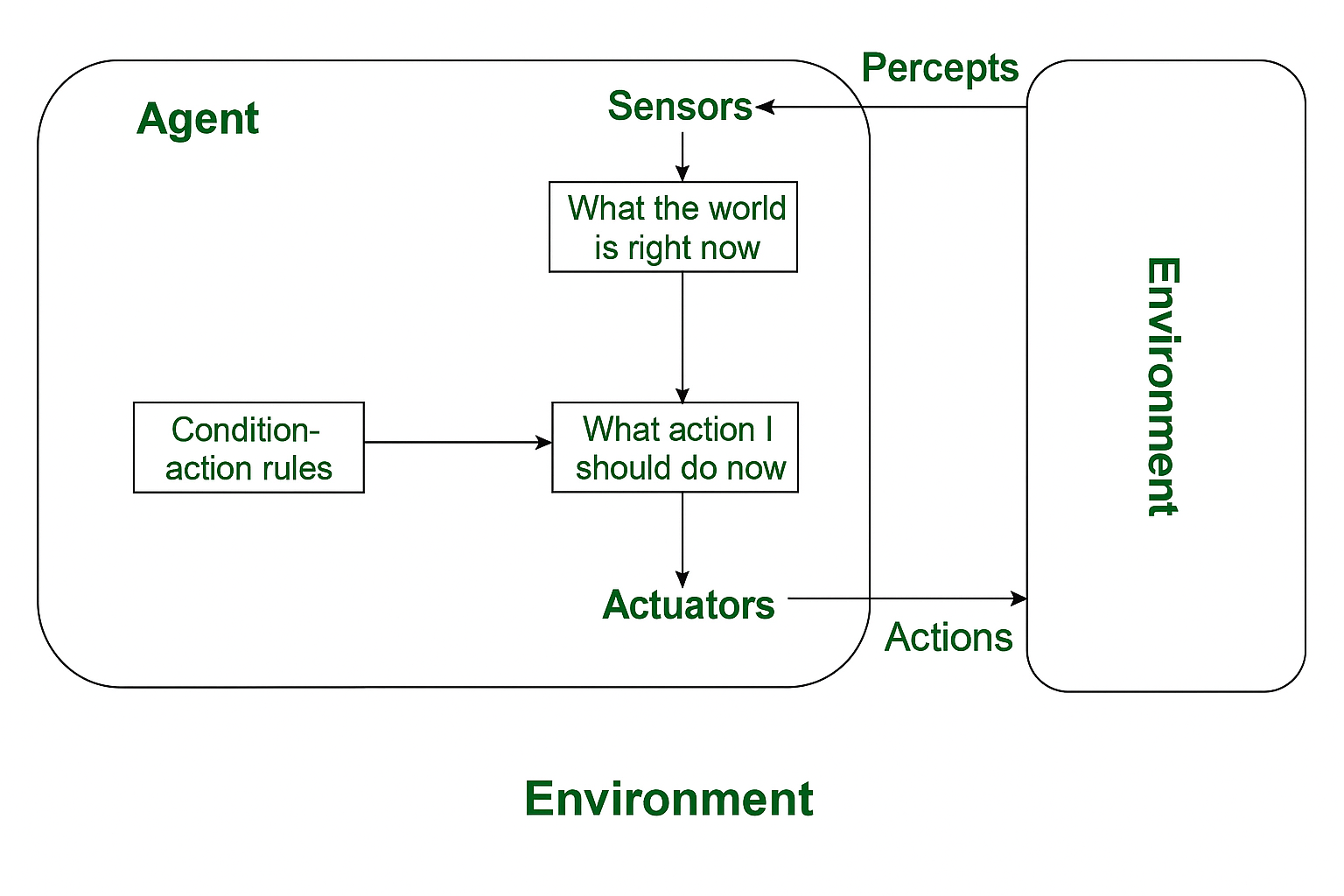
Simple reflex agents make decisions based on the current percepts or observations and ignore the information from past sensory inputs. They work on a condition–action rule and perform any action based on the current condition.
For instance, a robot vacuum cleaner will work only after it perceives dirt in the room. The major drawback of the simple reflex agent is that it has limited intelligence. As a result, it reacts only to the immediate stimulus and does not consider past or unseen factors.
Model-Based Reflex Agent
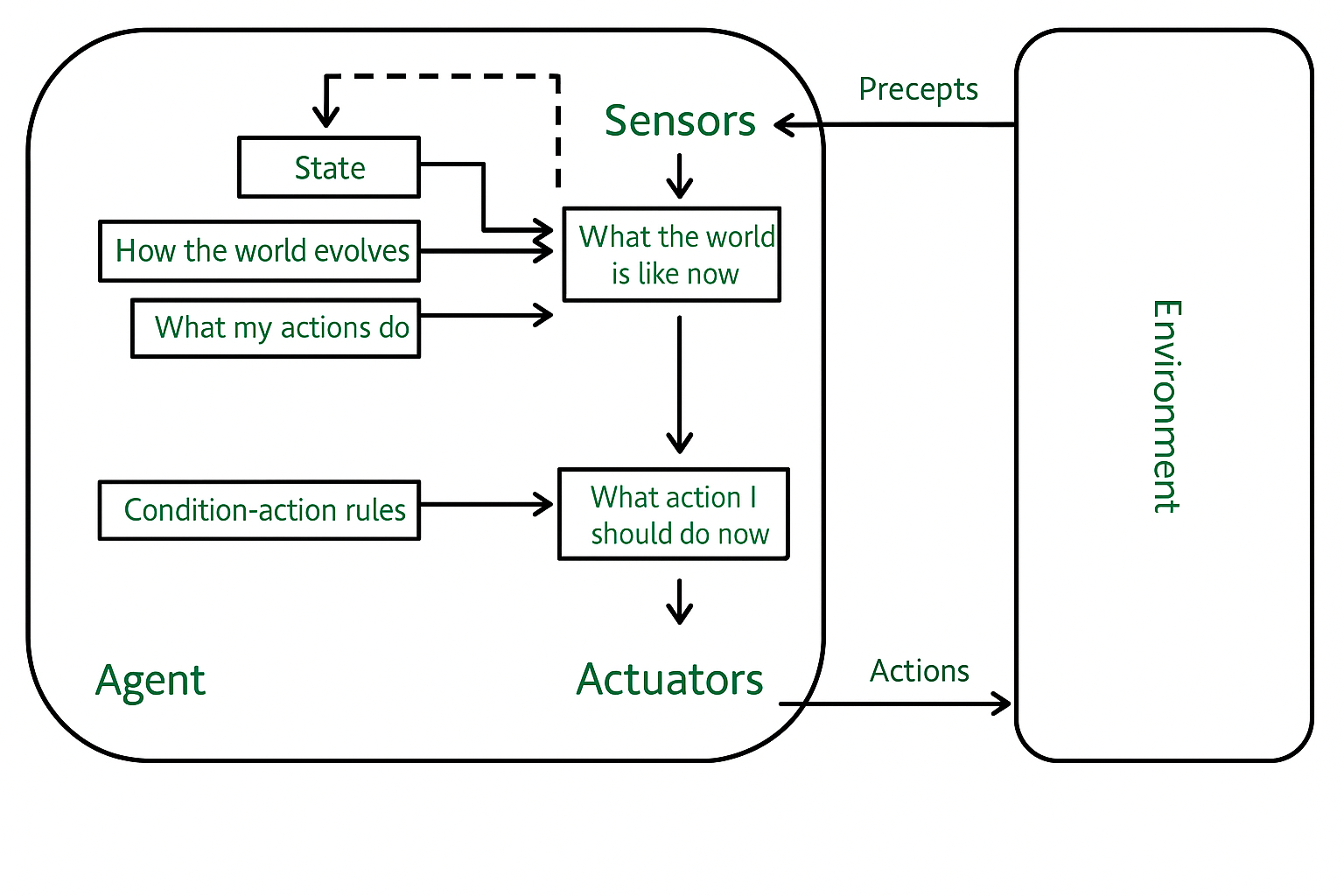
Model-based reflex agents handle the current situation by matching its current condition with some other similar conditions. They operate in partially observable environments where complete information is not available.
Models and internal state are two important factors on which model-based agents work. The models provide knowledge of how things happen in the world. The internal state represents the agent's memory or knowledge of the world based on past experiences or perceptions. If the current condition perceived by the model-based agent is not present in its observable environment, it uses a model of the world with the same condition.
For example, consider an AI-based weather-prediction system with a model-based reflex agent. The system will receive information (percepts) on current weather conditions, such as temperature or humidity, scan its internal state (historical weather data), analyze a real-world model for similar patterns, and then generate weather alerts.
Goal-Based Agent

Goal-based agents know the goal they want to achieve and can analyze the possible courses of action to reach it. AI-powered assistants like Siri or Alexa are examples of goal-based AI agents. They answer questions and control smart devices by understanding and acting on user commands.
Utility-Based Agent
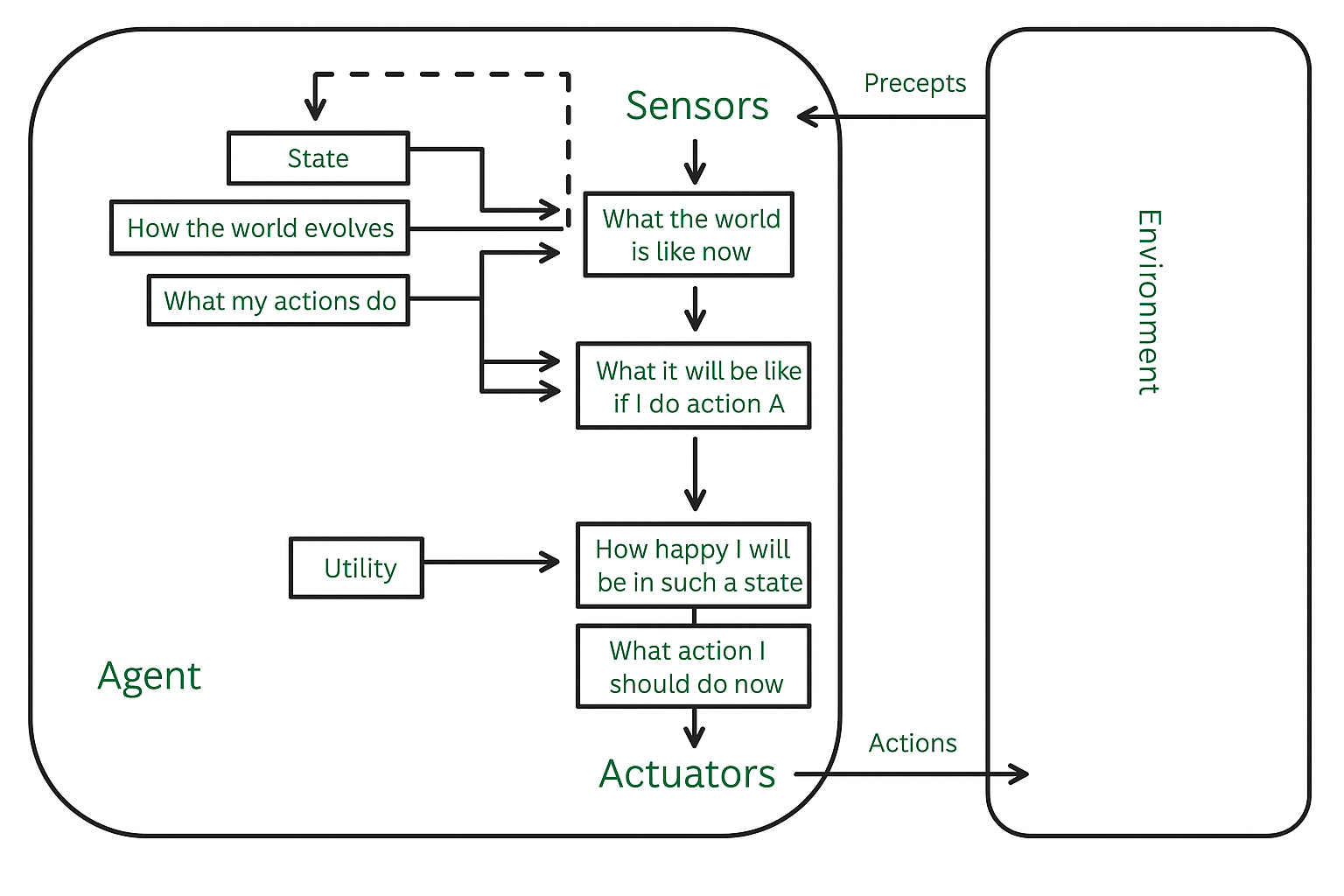
Utility-based agents perceive a goal and find the best possible way to achieve it. They are useful when there are many possible ways of performing a task. These agents choose actions based on their preference or utility. A self-driving car is an excellent example: the goal is to reach a specific destination safely and on time, and the agent evaluates multiple routes to maximize safety and efficiency.
Learning Agent
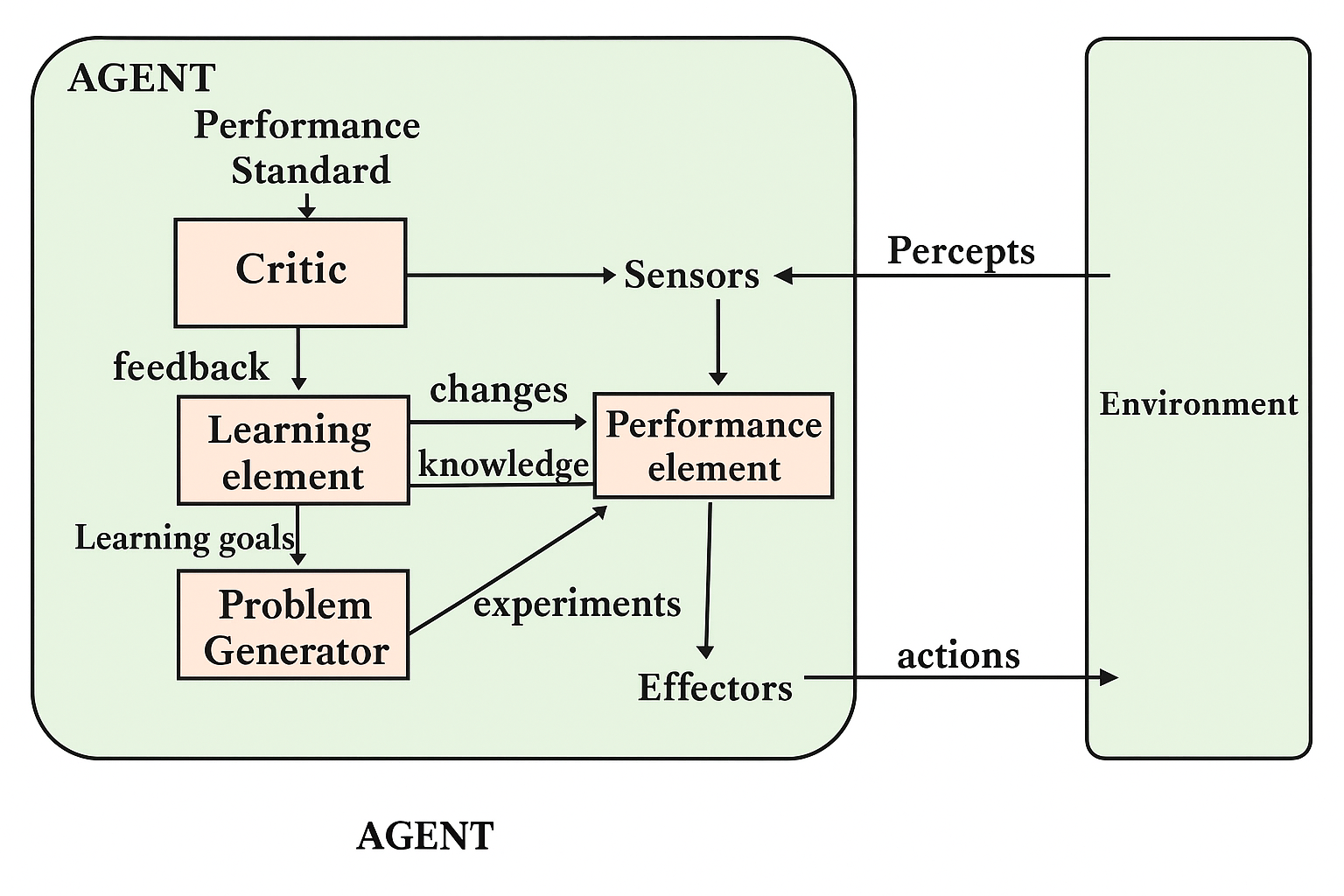
A learning agent improves its performance based on past experiences. It begins with minimal knowledge and adapts over time. It has four components:
- Learning Element – learns from the environment.
- Critic – provides feedback on performance.
- Performance Element – selects external actions.
- Problem Generator – suggests new experiences to acquire more knowledge.
Learning AI agents in financial institutions detect fraud by analyzing transaction patterns and identifying anomalies. These agents continuously learn from new data to improve their tracking accuracy.
How Do Agentic Workflows Work?
Picture a customer success team using traditional automation to handle data integration requests. When a client asks to connect their CRM to their analytics platform, the system follows a rigid checklist: check credentials, validate schemas, attempt connection, and escalate if anything fails. While this works for straightforward integrations, it breaks down when dealing with complex data transformations, custom field mappings, or unexpected API changes.
With an agentic workflow, your data integration assistant transforms into an intelligent problem-solver that adapts to each unique scenario. When a client needs to sync customer data across multiple platforms, the agent orchestrates a sophisticated, multi-step process:
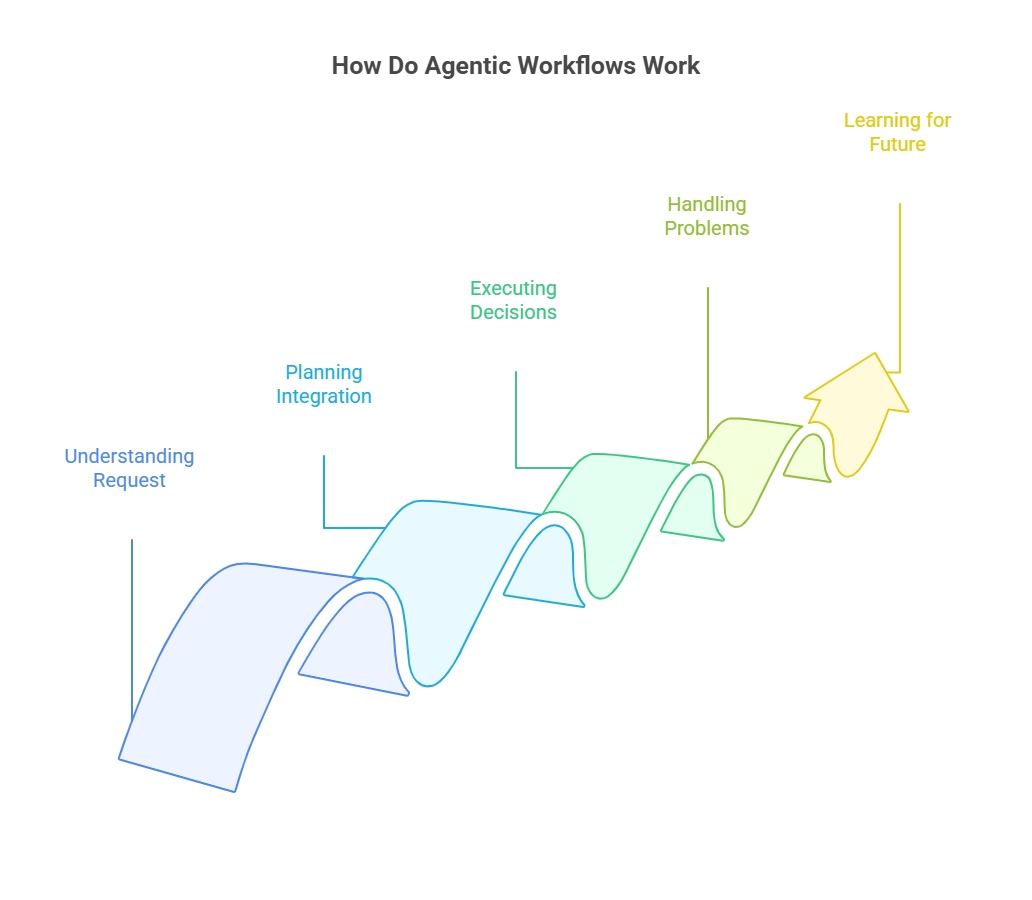
1. Understanding the request
The AI agent starts by comprehensively analyzing the data landscape. It examines source and destination systems, identifies data types and relationships, and asks targeted questions like "Are there custom fields that need special handling?" or "What's your preferred sync frequency for real-time vs. batch data?"
2. Planning the integration
Based on its analysis, the agent automatically maps fields between systems while flagging potential issues. It can detect data type mismatches, identify missing required fields, and even suggest optimal transformation rules—all while keeping you informed of its reasoning and recommendations.
3. Executing with smart decisions
The agent doesn't just follow a script—it makes intelligent decisions throughout the process. If it encounters an API rate limit, it automatically adjusts sync timing. When it finds data quality issues, it applies appropriate cleansing rules or flags records for review, always optimizing for both accuracy and performance.
4. Handling problems automatically
When something goes wrong, the agent doesn't simply fail and escalate. It diagnoses the root cause, attempts alternative approaches, and can even modify its strategy mid-process. Failed API calls trigger retry logic with exponential backoff. Schema changes prompt automatic remapping attempts before human intervention.
5. Learning for next time
Every integration teaches the agent something new. It logs successful patterns, learns from edge cases, and builds institutional knowledge that benefits future integrations. When it does escalate to your team, it provides comprehensive context—what was attempted, what worked, what didn't, and suggested next steps.
The result? What once required hours of manual troubleshooting and multiple handoffs now happens seamlessly in the background, with your team staying informed and stepping in only when their expertise truly adds value.
Key Capabilities of AI Agents
Perception
AI agents perceive their environment through data, sensors, cameras, or other inputs.
Autonomy
They are self-governing, selecting their own approaches and managing resources.
Learning Capability
Machine-learning techniques such as reinforcement learning and neural networks enable agents to refine decisions over time.
Reasoning
Agents reason about their environment and internal knowledge to find suitable solutions—model-based agents are classic examples.
Ethical Decision-Making
Agents can detect data biases, minimize their impact, and provide reasoning for actions to ensure transparency.
Components of AI Agentic Workflows
- Task Decomposition – breaking complex tasks into subtasks, mapping their relationships, and prioritizing them.
- Decision-Making Processes – collecting and processing data to select the best course of action.
- Interaction with Human Operators – receiving guidance or feedback through text prompts or voice commands.
- Integration with Existing Systems – seamlessly connecting with software, databases, and hardware for coherent data exchange.
- Task Completion and Follow-ups – executing tasks, measuring performance metrics, learning from outcomes, and documenting processes.
Benefits of AI Agentic Workflows
Increased Efficiency
Task decomposition allows agents to work on subtasks sequentially, improving overall outcomes. Organizations implementing comprehensive AI strategies report significant efficiency gains across their operations.
24/7 Operation Capability
Agents can operate continuously, enabling global business expansion irrespective of time zones.
Reduced Human Error
High-precision, automated execution minimizes mistakes common in manual processes.
Cost Savings
Automation reduces the need for a large workforce and lowers operational expenses over time. Engineering teams utilizing AI-powered tools report substantially faster analysis processes.
AI Agentic Workflow Examples
- Customer Service Automation – agents handle queries and escalate complex issues.
- Supply-Chain Optimization – agents manage inventory, forecast demand, and optimize delivery routes.
- Financial Fraud Detection – agents analyze transaction data for anomalies.
- Personalized Marketing Campaigns – agents segment customers and deliver tailored recommendations.
- Automated Recruitment – agents sift through resumes and schedule interviews.
Tech Behind AI Agentic Workflow
- Big Data Technologies – Hadoop, Apache Spark, Google BigQuery, Snowflake.
- Cloud Computing – scalable, collaborative infrastructure.
- RPA – robotic process automation for rule-based tasks.
- Workflow Orchestration – sequencing, scheduling, error handling, monitoring.
Challenges with Implementing AI Agentic Workflows
- Technical infrastructure requirements
- Data quality and availability
- Integration with legacy systems
Steps for Implementing AI Agentic Workflows
- Assess Organizational Readiness – infrastructure, budget, expertise.
- Identify Suitable Processes – repetitive, data-intensive, decision-heavy tasks.
- Select Appropriate AI Technologies – align tools with goals; organizations are increasingly planning to expand their AI investments.
- Pilot Projects and Scaling – start small, refine, expand.
Few Tools That Can Help Build Agentic Workflows
The agentic AI tool landscape has evolved rapidly, with GitHub Copilot, ChatGPT, and Claude emerging as leading platforms.
Conclusion
Enterprises can deploy AI agentic workflows to automate repetitive and time-consuming business tasks. By leveraging autonomous AI agents, organizations enhance productivity, accuracy, and decision-making. With analytics professionals increasingly employing AI for documentation and comprehensive AI strategies delivering significant efficiency gains, adopting agentic workflows represents a critical competitive advantage for modern enterprises.
FAQs
How does prompt engineering help agentic workflows?
Prompt engineering clearly instructs AI agents, enabling them to execute tasks sequentially as subtasks and deliver accurate outcomes.
What are agentic workflow design patterns?
Design patterns—reflection, tool use, planning, and multi-agent collaboration—guide agents in autonomous work, communication, and decision-making.
What is the cost of implementing agentic workflows?
Costs depend on computational resources and LLM token pricing. According to Andrew Ng, generating one trillion tokens varies significantly across different AI models and platforms.
What is the difference between workflow and agentic AI?
Workflow AI follows a set sequence of steps, like a recipe. It does A, then B, then C in order.
Agentic AI can think and make decisions on its own. It figures out the best way to reach a goal, even if that means changing its approach along the way.Think workflow AI as following a GPS route exactly, while agentic AI is like having a smart driver who can take detours and find better paths.
What is the agentic approach to AI?
The agentic approach means building AI that can work independently toward goals, like a capable assistant.

.webp)
